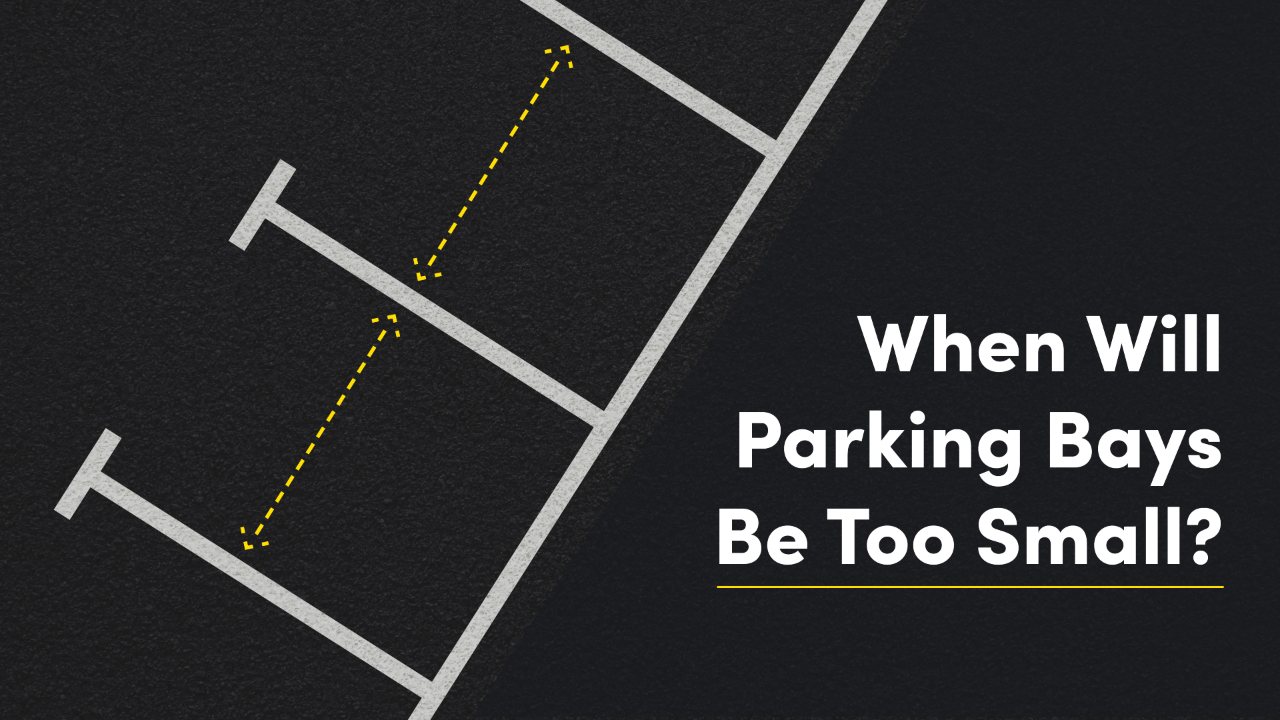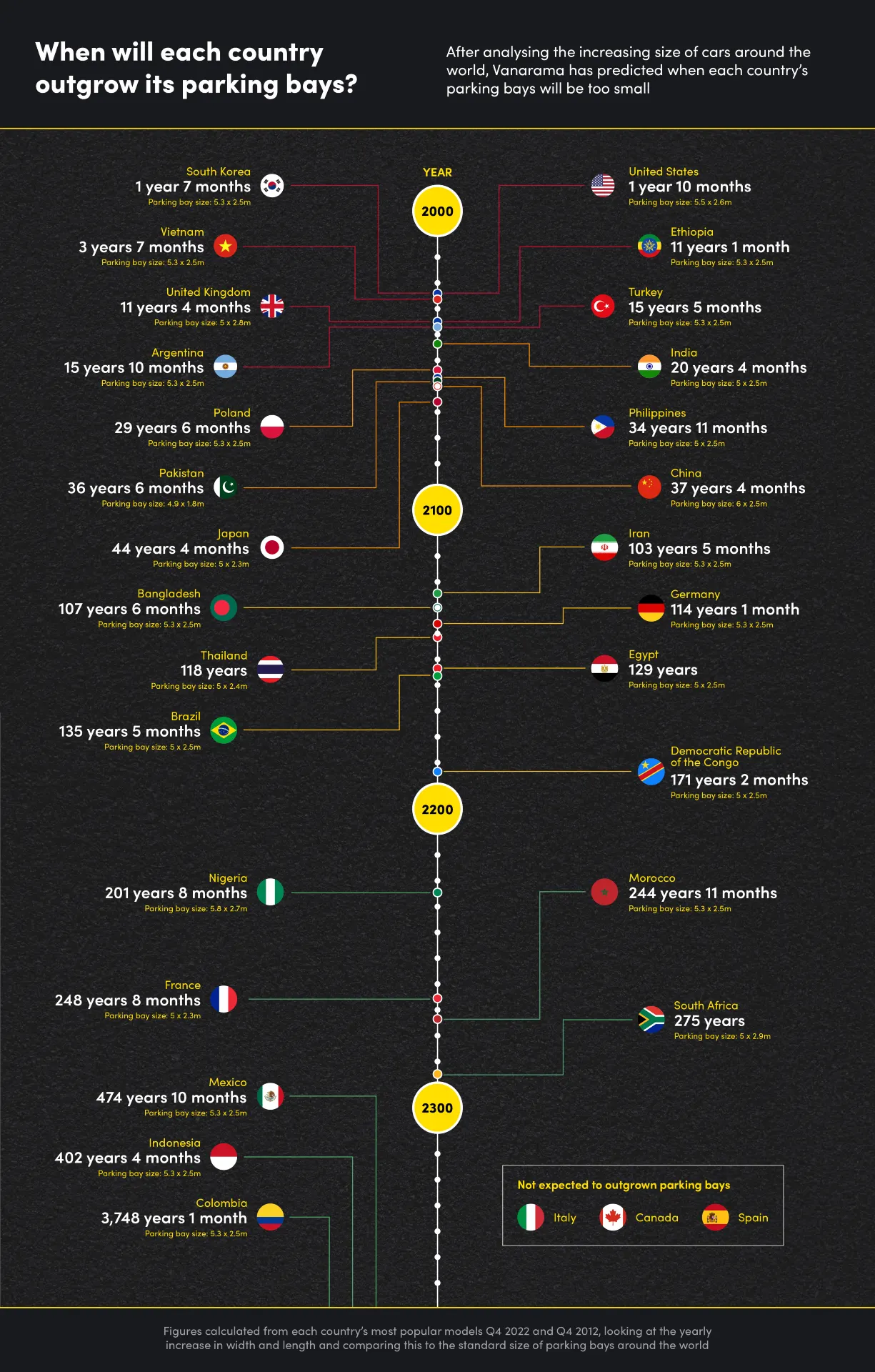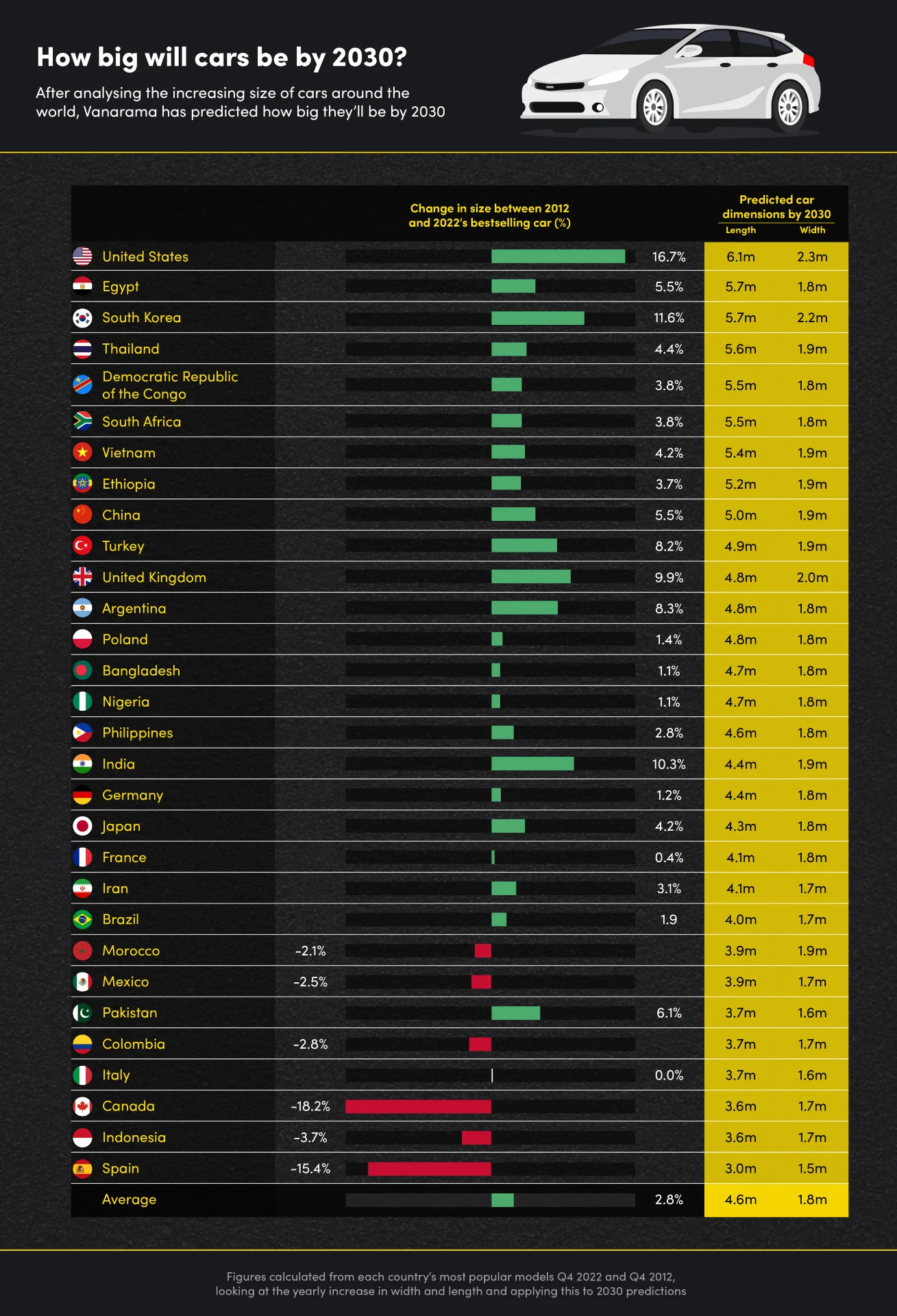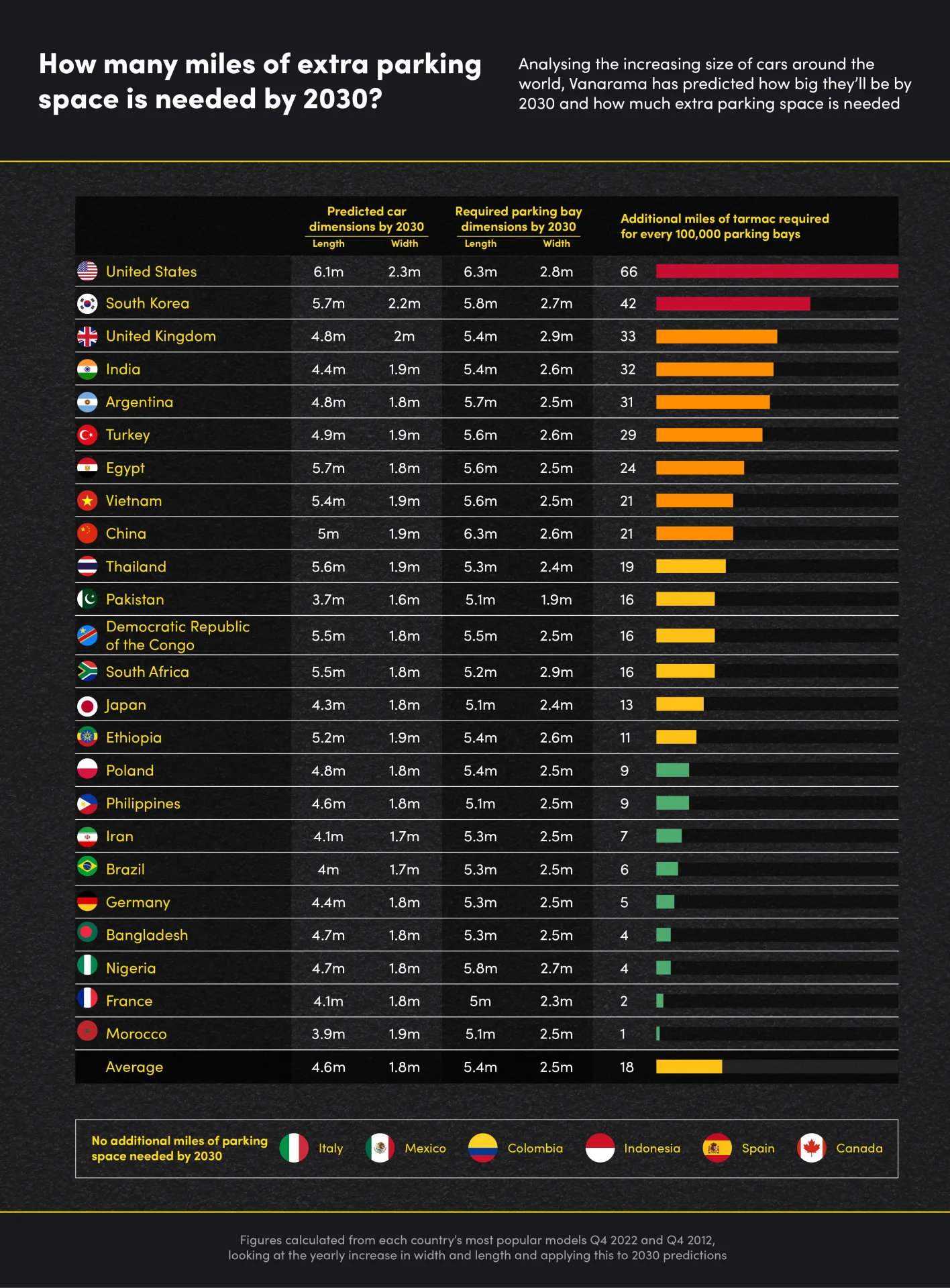It’s a real shame that 2023 will see the very last Ford Fiesta roll off the production line, but it comes as no surprise. Even Ford’s bestselling supermini couldn’t find a way around one of the industry’s most notable and enduring trends of late: drivers want bigger cars.
And that demand has been countered with a solid supply of SUVs and crossovers from almost all manufacturers. From Porsche to Peugeot, and everything in between, there’s something for every taste. But, as the infrastructure around them remains the same, when will we reach a tipping point?
Analysing the most populous countries' bestselling cars and how they’ve changed in size over the years, car leasing experts Vanarama calculate when each nation’s car parks will run out of room.
Key Findings:
-
South Korea will outgrow its parking bays before any other country – only one year and seven months from now (August 2024).
-
The USA is only just behind (one year and 10 months, November 2024).
-
The UK will outgrow its parking bays by May 2034 – only 11 years and four months from now.
-
Spain, Canada and Italy aren’t expected to outgrow their parking bays.
-
America’s cars are expected to be bigger than any other country’s by 2030 (6.1m x 2.3m)
-
The USA requires an extra 66 miles of car park tarmac for every 100,000 bays by 2030.
-
The UK requires 33 miles extra for every 100,000 bays, or 3,729 miles of extra parking space in total.
South Korea And USA Will Outgrow Their Parking Bays Next Year
According to our study, South Korean drivers are one year and seven months away from outgrowing their parking spaces. Such is the increase in the size of their cars over the past 10 years, their motors simply won’t fit by August 2024.
Just behind is the USA, its drivers making it only three months more to November 2024 before their cars won’t fit in their parking bays. That’s not surprising, however, as America’s most popular car has had the largest increase in dimensions since 2012 – jumping by more than a metre in length and 0.3 metres in width between the Honda Civic 10 years ago and the Ford F-Series today.
Vietnam sits in third with three years and seven months until parking bays aren’t big enough (August 2026).
UK Drivers Are Only 11 Years From Not Fitting In Parking Bays
The UK car market is without a doubt one that’s grasped the SUV trend with both hands. Where our most popular car was once the Ford Fiesta (2012), it’s now the much bigger Nissan Qashqai – a shift that’s largely to blame for Ford deciding the Fiesta will be no more from summer 2023.
In only 11 years and four months, by May 2034, you won’t be able to park without straddling the white lines on either side of the car. Only four countries (South Korea, USA, Vietnam and Ethiopia) will outgrow their bays before the UK.
Spain, Canada And Italy Aren’t Expected To Outgrow Their Parking Bays
Drivers in Spain, Canada and Italy needn’t fret, as these countries aren’t expected to ever outgrow their parking bays according to our findings. This is because their most popular cars have gotten smaller since 2012, or in Italy’s case, remained exactly the same.
While the USA stepped up to an F-Series pickup truck in 2022, Canadian drivers moved the opposite way, swapping it for a much more manageable Toyota RAV4. Spain went from the 2012 Nissan Qashqai to the latest Fiat 500, while Italy has stuck with the Fiat Panda this whole time.
Also fairing well are motorists in Colombia, Mexico and Indonesia, who are at least 402 years away from the size of their parking bays becoming an issue – thanks to the very gradual increase in the size of their cars since 2012.
The USA Will Have The World’s Biggest Cars By 2030
By analysing the size increase of each country’s most popular car between 2012 and 2022, we were able to calculate how big they’d be by 2030 if they were to continue growing at the same rate.
American motorists will drive the biggest cars, with their future models expected to be 6.1 metres in length and 2.3 metres in width (a 13% growth on the current bestseller). Egypt and South Korea are second and third on this metric, with expected dimensions of up to 5.7 metres by 2.2 metres.
Despite jumping from the Fiesta to the much bigger Qashqai in the past 10 years, however, the UK is way down in eleventh, with expected dimensions that are only 0.4 metres longer and 0.2 metres wider than the Qashqai.
At the other end of the table is Spain. Because the country’s bestselling car has decreased in size since 2012, the 2030 bestseller is predicted to be only three metres long and 1.5 metres wide.
By 2030, America Will Need 66 Miles Of Extra Parking Space For Every 100,000 Bays
With the vast majority of cars around the world expected to increase in size, we calculated how big parking bays will have to be to accommodate them, and how many extra miles of car park tarmac are required to maintain the same number of parking bays.The USA again comes out on top, with 66 miles of additional tarmac required to maintain every 100,000 parking bays.
South Korea, in second, needs 42 miles of extra car park tarmac for every 100,000 bays.
The UK Must Find 3,729 Miles Of Extra Parking By 2030 To Maintain The Current Number Of Spaces
In third, the UK needs 33 additional miles of car park tarmac for every 100,000 bays by 2030. Applied to the estimated total of 11.3 million bays, that’s a total of 3,729 miles of extra parking needed – just to maintain our current number of spaces. If you were to line all of that tarmac up, it would run from Land’s End to John O’Groats and back twice.
By comparison, Morocco requires only one mile of additional space for every 100,000 bays, while Canada, Spain, Indonesia, Colombia, Mexico and Italy’s car parks are already fit for purpose, due to their cars getting no bigger.
Methodology
This research covers the most populous countries around the world, excluding those where external factors may have an impact. Each country’s current bestseller, based on the latest available sales data, was compared to the most popular car in late 2012. The change in dimensions was calculated and applied to future projections to estimate when each country’s most popular car will outgrow the dimensions of its parking bays.
By working out how big parking bays will need to be to accommodate these larger models, we were then able to calculate how many miles of extra car park tarmac are required for every 100,000 existing parking bays.







